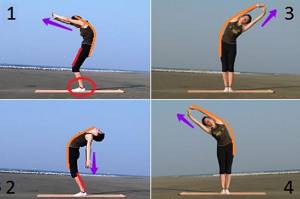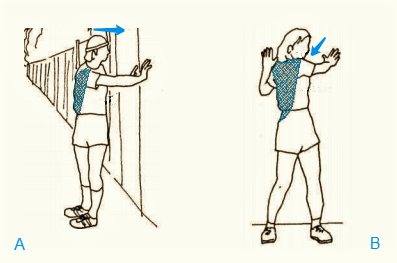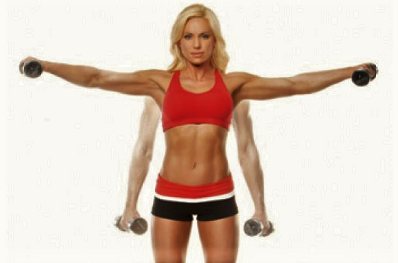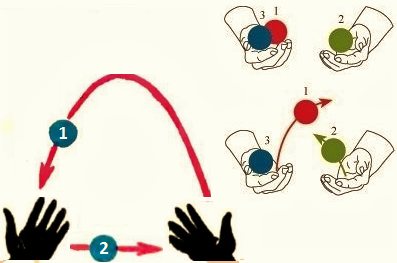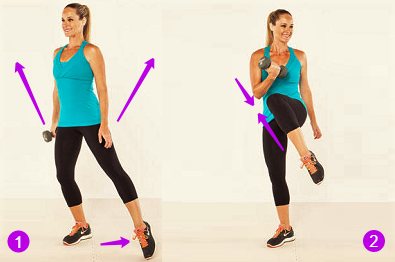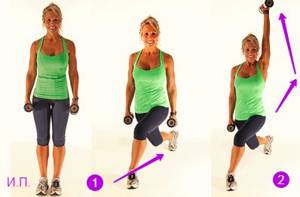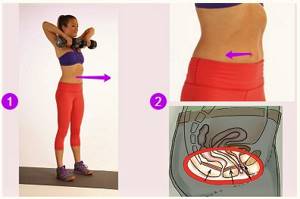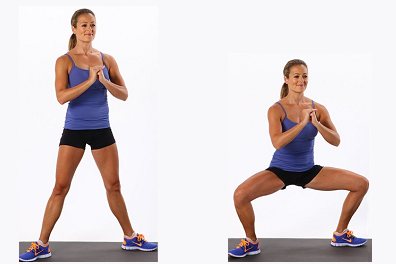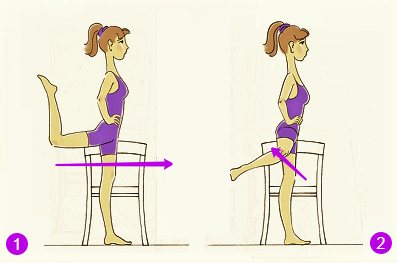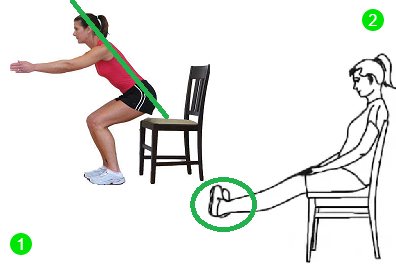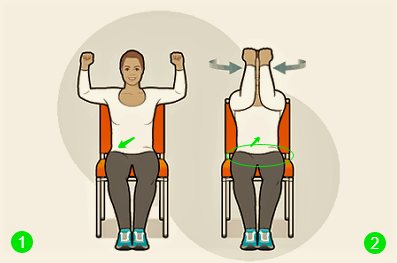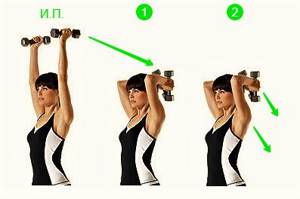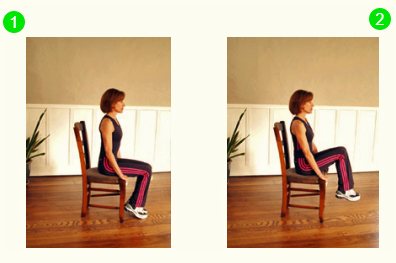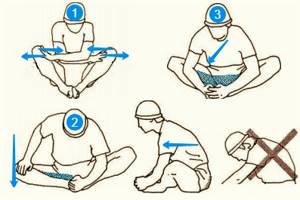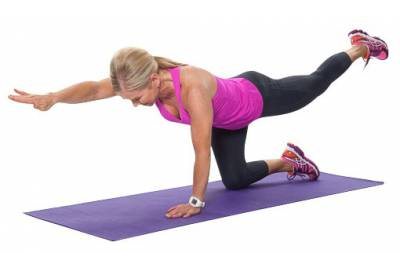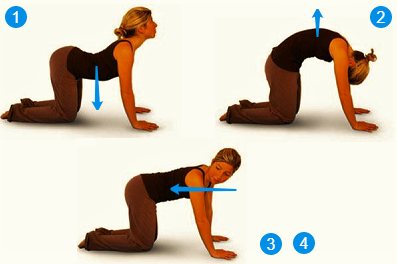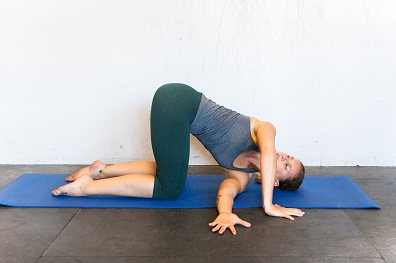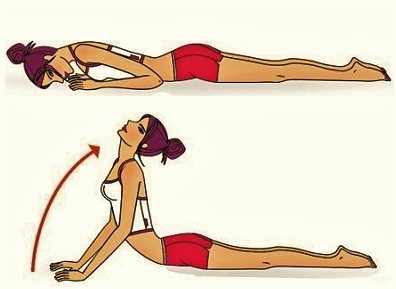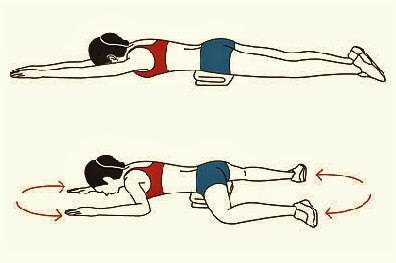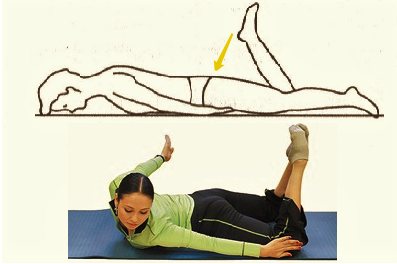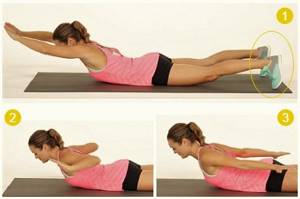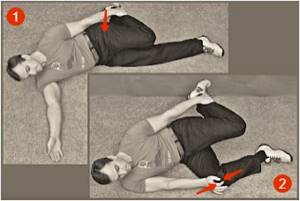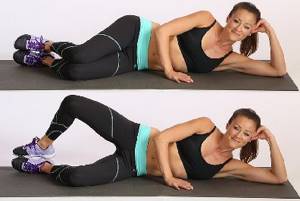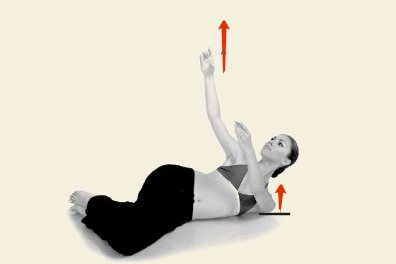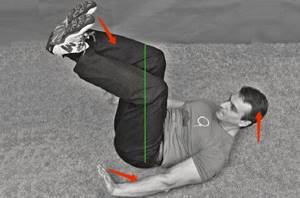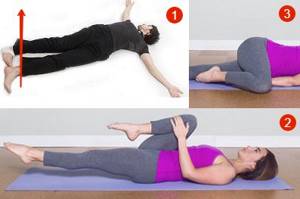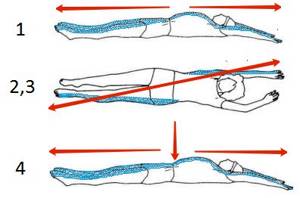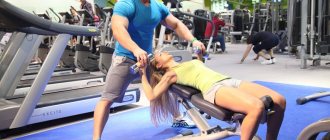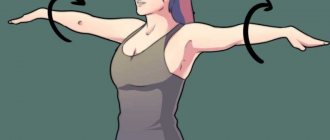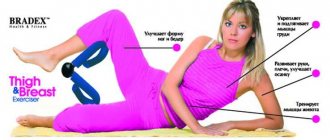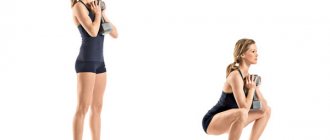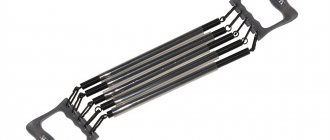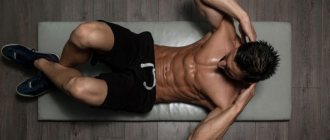To extend life expectancy and its quality, for both men and women, it is extremely important to regulate eating behavior in a timely manner, give up bad habits, and intensify and diversify physical activity. It is recommended to do physical exercises for older women starting from the age of 40, before the onset of menopause.
In this case, this complex process of hormonal changes will take place more or less easily, and the remaining inevitable, usually pronounced, signs of biological aging will appear not by the age of 60-75, but later. And this has been proven in practice and confirmed by medical research.
You can look great and be healthy beyond your years into old age.
However, if you “didn’t have time” to start training on time, don’t despair. It's never too late to start exercising regularly for health purposes. The information, photos and videos in this article will help older women begin the process of working on their body and psyche, even if their level of physical fitness and health is unsatisfactory.
The weekly physical activity plan presented below is maximally optimized from the point of view of preventing and stopping typical diseases inherent in aging women. However, in the presence of obvious chronic pathologies of the second, and especially the third stage of development, a set of these measures must be approved by the attending physician.
Step exercises
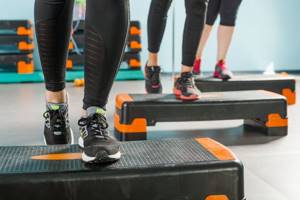
They are less tiring than jumping rope, and in terms of energy consumption they are only slightly inferior to running. Step exercises work the leg muscles very well, from the feet to the hips. The gluteal muscles and abdominal muscles are trained, especially the lower part. Step aerobics improves blood supply to the pelvic organs, eliminates stagnation in this area of the body, which has a positive effect on women's health.
It should be borne in mind that, like running, exercise on a step platform leads to muscle growth in the lower body and an increase in the volume of the hips and buttocks.
Warm up the arms and forearms
The first exercises for optimal exercise in the morning are most often warm-up movements for the arms. This part can also be done while sitting in the pastel, but in order to better warm up, it is better to stand. The sequence may vary, but the following is specifically arranged to obtain the best effect.
Exercises for morning exercises to warm up joints and tendons:
- fold your palms at your chest (as for prayer), without lifting them apart from each other, spring and press down a little - 10-20 movements;
- arms to the sides, stretched to the maximum, moving only the hands up/down with a feeling of tension to the fingertips - 10-20 movements;
- rotation of the elbows towards/away from oneself – 10-20 movements in each direction;
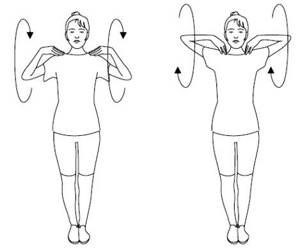
- stretching your arms up above your head, twisting the wrist lock, pulling up from the shoulder joints - about 20 seconds;
- wrist lock in front of you, springing movements to the chest and back while maintaining the wrist lock - 10-20 movements;
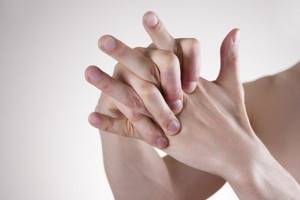
- one hand is stretched forward, the palm is looking up, with the other hand they take the fingers and pull them down, trying to bend the straight fingers in the opposite direction, repeat on the second hand - 10-20 movements for each hand;
- the hand rises up, bends at the elbow, which is above the head, and the palm behind the back above the cervical vertebrae, with the other hand they press on the elbow and knead the shoulder joint - 10-20 small movements.
Warm up the muscles:
- intense flexion/extension of fingers into a fist – 20 seconds;

- wall push-ups, standing – 20 times;
- hands on the wall, the body is bent so that both the arms and the body are perpendicular to the surface, springy movements of the body up/down - 20 seconds;
- independent tension/relaxation of the arms completely - 10-20 times;
- imitation of lifting a barbell (dumbbells) for the biceps – 10-20 times (light dumbbells can also be used).
This warm-up of muscles, joints and ligaments improves grip strength and develops muscles, helps tighten muscles and improves the appearance of the hands.
Swing your legs back
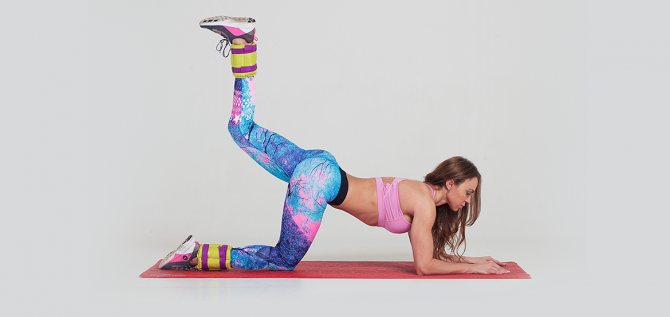
Being in it promotes the outflow of venous blood from the pelvic area, which is a good prevention of hemorrhoids, congestion in the kidneys and the female reproductive system. Staying there is also recommended during pregnancy. Swinging your legs backwards loads the buttocks, lower abdominal and back muscles - this complex is also called the core, or core. Strengthening your core cannot be overstated: it increases strength and endurance and makes other exercises easier.
Wide Angle Pose
Let's move on to performing yoga exercises for women's health. Sit on a gymnastic mat and spread your straight legs wide to the sides. The toes of the feet should point upward. Keep your back straight, squeezing your shoulder blades and opening your chest as much as possible. After exhaling, bend forward. Wrap your palms around the fingers of your lower extremities. Each time, try to exhale more air from your lungs, which will allow you to tilt your body lower. Stay in this motionless position for a minute.
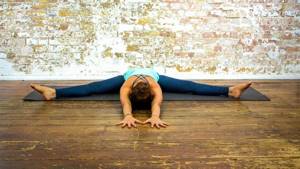
This exercise makes it possible to stretch the spine and open the joints of the pelvic area. Doing it daily helps restore ovarian function. The result of regular training is the normalization of the position of the abdominal organs.
Pushups
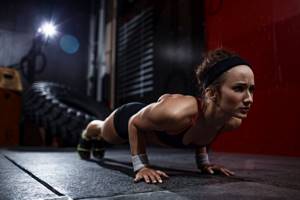
If you've never done a push-up before, full push-ups will likely be too difficult. Therefore, beginners may be recommended to do push-ups with the starting position not on their toes, but on their knees. This exercise is the best for the chest muscles. Its second advantage is its complexity:
- pumps up the muscles of the back, shoulders, arms;
- keeps the muscles of the abs, buttocks and legs in good shape.
Push-ups should definitely be included in your training program.
Half Moon Pose
To strengthen and stretch the muscles of the spine and open the hip joints, perform the following exercise. Lean on your outstretched right leg and arm. This is a complicated side plank.
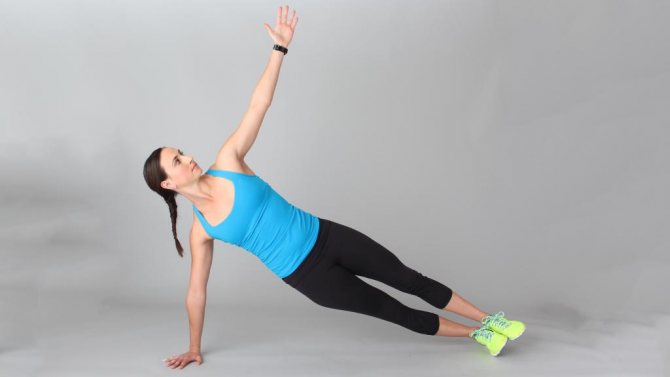
With your free hand, grab the toes of your outstretched left leg. While maintaining balance, tilt your head back and turn your chest towards the ceiling. Hold the position for 30 seconds. Then repeat the exercise, changing legs and arms.
Lying leg raises

The exercise is also known as the book exercise. It will be appropriate for those who have mastered full push-ups from the floor from a lying position. If push-ups mainly train the upper body, then the “book” pumps up the abs, lower back, buttocks and thighs. Together, these exercises create favorable conditions for weight loss caused by fat deposits, including in the thighs, buttocks and abdomen. Due to the fact that the load on the lower body is moderate, it does not lead to a noticeable increase in body volume in these places.
Leg extensions while lying on your back
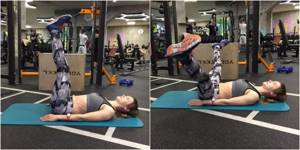
The exercise is quite easy, does not require special training and can be mastered by any woman. It is useful for strengthening the abs, but more importantly for the muscles of the inner thighs. There are not many exercises for this part of the legs, so “leg spreads while lying on your back” are recommended for every girl. Strengthening the adductor brevis, longus and magnus muscles, as well as the pectineus and abdominal muscles will allow you to:
- ease the burden of bearing a child;
- maintain adequate physical activity throughout pregnancy;
- speed up the birth process.
Plie squats
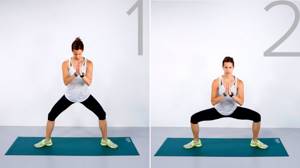
As a rule, this muscle is underdeveloped and it never hurts to pump it up. In addition, plie squats, unlike regular squats, do not overload the gluteal and outer thigh muscles. That is, they can be recommended for those women who do not want to increase the volume of these body parts. The exercise itself is simple and not energy-consuming. For this reason, it is recommended to do it with weights - with a light barbell, with one bar (on the shoulders) or with dumbbells (in the hands).
Morning exercises
One of the best options for morning exercises for older women is the popular author’s “Eye of Revival” system. Peter Kalder created it after visiting a Tibetan monastery. Practice shows that this complex, when performed regularly, really has a healing and rejuvenating effect on the body.
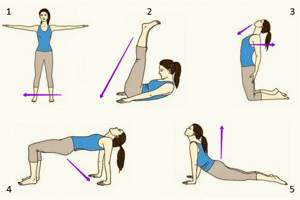
The Eye of Rebirth exercise set consists of 5 simple exercises
The exercises should be performed in the order shown in the figure. You should start with 3 repetitions of each movement. The dosage is increased gradually.
As a rule, +2 repetitions are added every week, but you don’t have to rush, focusing on your feelings. The maximum number of repetitions of each exercise is 21 times, which are performed at a calm pace in 15 minutes.
Before the complex, we recommend warming up large joints - 6-8 circular movements in each direction (see figure below). Do the movements at a medium pace. In general, the warm-up will take 3-4 minutes.
If necessary, pay special attention to the joints of the wrists and fingers, increasing the number of special exercises for them, inserting them into part 6.
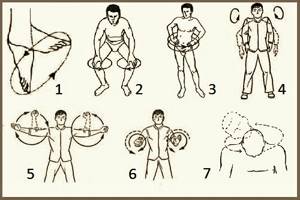
Whirlwind joint warm-up is taken from the system of martial arts
How to correctly perform 5 Tibetan pearls (rituals or exercises), what are the requirements that must be observed in relation to the entire selection of exercises, you can learn from this video. This is one of the best and most competent demonstrations of this complex.
For those who don’t like such morning exercises, this video set of exercises for older women may be suitable.
Walking lunges with dumbbells
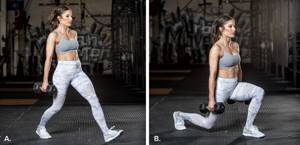
In a gym or outdoor setting, when there is the possibility of dynamic and non-stop movement, this exercise also helps strengthen the core muscles and improve body stability. Since lunges do not require significant physical training, they can be recommended as an exercise for initial training in order to progress to more strength-bearing loads.
Shoulder bridge with raised arms

Thanks to the latter, shoulder bridges are recommended for all women with postural defects who spend a lot of time in a sitting position. The exercise is performed with support on the legs, due to which the spine is not overloaded, which eliminates its injuries, including the appearance of intervertebral hernias. This is another reason why the exercise is recommended even for people undergoing rehabilitation after spinal injuries or surgeries.
Dumbbell lateral raises

Meanwhile, it is the muscle weakness of the shoulder and thoracic regions that causes the early development of osteochondrosis of this location, the appearance of pain and intervertebral hernias. Therefore, if you are thinking not only about external beauty and weight loss, but also about health, then this exercise, as well as others aimed at developing the shoulder girdle, should be done at least once a week. In conclusion, we note that in order to get benefits from fitness, you need to do it regularly and for a long time. Getting results in a month or two is unrealistic. Therefore, get ready to work on yourself for a long time.
Besides exercise, nutrition is extremely important. If your goal is weight loss, then you need to reduce the energy value of food consumed to 1500-1800 kcal per day. If your goal is to gain muscle mass, then you need a high-protein diet and an increased daily caloric intake of up to 2500 kcal.
Universal gymnastics complex for older women
For women over 40 years of age, it is important to begin maintaining coordination of movements and tone of the muscular-ligamentous apparatus, slow down the inevitable development of osteoporosis and osteochondrosis, keep body weight normal, maintain correct posture, flexibility of the spine and range of motion in the joints of the limbs.
A set of exercises is suitable for this, which must be done according to the following rules:
- the optimal number of classes per week is 3 times;
- duration of one lesson – 45 minutes;
- time of the lesson - 30 minutes after the second breakfast (11-30) or before dinner, but so that at least 20 minutes pass between the end of the lesson and the meal;
- sequence of exercises - strictly in the order indicated below;
- the number of repetitions of each dynamic exercise is strictly according to sensations, until you feel slightly tired.
Attention! If pain occurs during exercise, stop doing the exercise immediately. You are doing it technically incorrectly, you have incorrectly calculated the dosage or the strength of tension (stretching). After a pause, you can try to continue training with the next exercise, but if the pain returns, stop the exercise. There is a reason to go to the doctor.
For the lesson you will need equipment:
- 3 tennis balls or other objects suitable for juggling;
- dumbbells or convenient plastic bottles of suitable weight - individually (from 0.5 to 2 kg);
- stable stool;
- large towel;
- rug.
You should exercise in loose clothing and barefoot. It is worth taking care in advance about musical accompaniment and the availability of drinking water. Shortly before training, you should ventilate the room.
Warm-up
Before any physical exercise, you should do a warm-up. In our opinion, the optimal preparatory exercises are the movements from the vortex joint warm-up presented above.
Exercises while standing
Table 1 - Exercises for joints and muscles of the torso, arms and shoulder girdle:
| Images and title | Brief instructions |
| Do the exercises in the following algorithm. In the first 10-15 seconds, take a position so that the stretch is minimal and comfortable. Then exhale and intensify it a little for another 10-15 seconds. Breathe evenly and shallowly. Areas where you need to feel stretching are highlighted in orange, and tension in red. Additionally, stretch in the direction of the purple arrows. |
| Do 10 twists left and right. At the end of each turn, look at the wall, exhale, and try to touch the wall with your palms (A). After completing the last twist, freeze, turning your head away from the wall as much as possible, look up, breathe shallowly (B). Feel the muscle stretch (blue zone) for 10 seconds, exhale, and twist a little for another 10 seconds. Repeat again, but with a final fade in the other direction. |
| Stand tall, fold your hands in prayer mudra (forearms parallel to the floor). Squeeze your palms with force. Keeping your chest motionless, inhale and exhale with your stomach (while inhaling, protruding it, and retracting it as you exhale), raise your arms up for 10 counts, without releasing the pressure in your palms. Lower your arms just as slowly. Do exercise 3 3 times. |
| Place your feet slightly narrower than your shoulders. Keep your head straight. Maintaining correct posture, raise your arms to the sides until they are parallel to the floor. During abduction, inhale, and when lowering your arms, exhale with emphasis. Repeat raising your arms to the sides until you get tired. Rest, and do 2 more sets, remembering to leave plenty of rest in between. |
| Spend 5 minutes juggling. This is an excellent exercise not only for coordination of movements. It perfectly stimulates the cerebellum, helps increase concentration, and strengthens the eye muscles. To avoid running after dropped balls, work on a sofa, bed or chair. Don't be afraid and don't despair. The movements may seem complicated, but they will turn out quite quickly. |
Between 2 blocks of exercises performed in a standing position, we suggest performing simple movements that, despite their simplicity, will support the vestibular apparatus. This is important because age-related changes (impairments) in its functioning affect gait and are the cause of dizziness and spontaneous falls in older people.
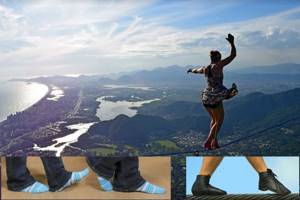
Walking even on an imaginary tightrope trains and maintains a sense of balance.
During one music track (3-5 minutes), walk with your feet in one line:
- forward and backward - with side steps (the toe of one foot touches the heel of the other), on high half-toes;
- forward - sliding step;
- at the end of the line of movement, make smooth turns of 180 degrees, rising on tiptoes;
- while walking, change the position of your hands - to the sides, up, behind your back in a lock, holding an imaginary balancing pole or tightrope walker's fan in your hands.
Advice. You can strengthen the training of the vestibular apparatus while walking along a line by increasing the number of turns or complicating them by performing a half, or maybe a full (360 degrees) turn on the toe of one leg, while further maintaining balance on an imaginary rope.
Table 2 - Exercises for joints and muscles of the torso, pelvic floor and legs:
| Image and title | Brief instructions |
| Starting position: basic stance, dumbbells in both hands. 1. Raising both arms to the sides, move your left leg to the side. You can put it on your toe, you can lift it up. Inhale. 2. Standing on your right leg, touch your right elbow to your left knee, lowering your left hand down. The back is straight, slight rotation of the body is possible. Exhalation. 3. = 2 (inhale), 4. = 1 (exhale). And on the other leg. Repeat until slightly tired. |
| Starting pose: basic stance 1. Cross lunge backward with your left leg, leaving your body weight on your “front” right leg. Exhalation. 2. Raise your right arm straight up, passing it across the side. At the same time, sit down a little lower. Inhale. 3. Return to position 1. Exhale. 4. Take the starting position. Inhale. Do the exercise in the other direction. Repeat until slightly tired. |
| Starting position, as in the photo. 1. Inhale, keeping your chest and arms still and your stomach sticking out. 2. As you exhale, lower your arms down, pull in your stomach and strongly tighten your pelvic floor muscles. This Kegel tension is the main movement of the exercise. All attention is on him. Freeze without breathing for 3-7 seconds. Inhaling, slowly return to the starting position. Repeat 6-12 times. |
| Place your feet wider than shoulder-width apart, with your toes turned outward. Interlace your fingers and place the resulting lock in the center of the sternum. Do slow (4 counts) half squats, and the same slow returns to the starting position. Keep your back and neck straight. When squatting, inhale, and when standing up, exhale. Dosage – individual (4-20 times). |
| In order to make swings with the fullest amplitude possible, perform swings by grasping a wall or the back of a chair. Condition - all parts of the body, except the legs, must be motionless. Breathing is shallow, arbitrary. 1. Make a “pendulum” with your knee back and forth. 16-20 times. 2. Perform 10-12 knee abductions to the side. Repeat on the other leg. |
| 1. Rest your forehead and forearms against the wall, placing your legs in a lunge with your feet parallel. Push your pelvis toward the wall until some tension appears in the calf muscle and Achilles tendon. After 10 seconds, increase the tension for another 10 seconds. 2. Relieve the tension in your lower leg and, using the same algorithm (10+10), stretch the side of your torso at the level of the hip joint, moving your shoulders to the opposite side. Repeat with the other leg. |

Approximate daily water intake (excluding first courses and drinks) – 2.0-2.4 l
On a note. At any age, especially in old age, and especially women after 45 years of age, it is necessary to drink a sufficient amount of clean drinking water. It is necessary for the normal rate of regeneration of bone and cartilage tissue, as well as for maintaining the elasticity of the intervertebral discs. If you feel thirsty during training, quench it with a few sips of water or unsweetened compote.
Exercises while sitting on a chair
| Image and title | Brief instructions |
| Paying attention to maintaining the tone of the thigh and buttock muscles is extremely important. Their laxity can also result in an accidental fall, injury and fracture. Repeat until tired: 1. Lift your butt off the chair, keeping your back straight. Inhale. Return to the sitting position slowly, without flopping. 2. As you exhale, straighten your legs and turn your feet to the left, and on the next repetition - to the right. |
| Take dumbbells. 1. Spread your arms bent at the elbows, inhaling through your stomach. The chest is motionless. 2. As you exhale, bring your arms in front of you, pull in your stomach and tighten your pelvic floor muscles. Hold for 2, maximum 3 seconds. Repeat 10-12 times. Rest. Do the series again. |
| Sit backwards on a chair. 1. As you exhale, bend to the side, pulling one dumbbell under your arm, and try to touch the floor with the second. As you inhale, return to a straight position. Repeat on the other side. There are 12 inclinations in total. 2. Immediately do 12 torso twists (left + right), holding your arms as in the photo. Exhale at the extreme points of the rotation. |
| Continue to sit backwards in your chair. Raise the dumbbells up. 1. As you exhale, bend your arms. Do not spread your elbows to the sides. Your forearms should be parallel to the floor. 2. Inhaling and without moving your arms and head, bend in your chest. 3. As you exhale, return to position 1. 4. As you inhale, straighten your arms up. The pace is average and smooth. Repeat 12 times. |
| 1. Sit on the edge of a chair with your feet on tiptoes. Check your posture. Stretch your head up. 2. Trying not to move your torso, raise your knees up. Freeze for 20-30 seconds (or as long as you can). Don't hold your breath. Breathe shallowly through your chest. 3. Slowly (!) return to pose 1. 4. Relax (you can round your back). Repeat 3-6 times. |
For your information. It is no coincidence that this complex includes quite a lot of exercises with dumbbells. They are recommended for older women as one of the main types of exercise to inhibit the processes of osteoporosis, control body weight and blood sugar levels. In addition, movements with dumbbells help maintain the elastic line of the inner part of the shoulder, which at this age begins to sag unsightly, preventing you from wearing short sleeves.
Exercises sitting on the floor and standing on all fours
| Image and title | Brief instructions |
| 1. Sit with your soles touching each other. Cross your arms, placing your palms on the inside of your knees. For 5 seconds, push your knees apart, but try to connect them. 2. Press down for 5-7 seconds on one knee, and then for the same amount of time on the other knee. 3. Bend forward for 5 seconds, exhale, deepen the tilt, and freeze for another 5 seconds. Repeat 3 times. |
| You need to step your buttocks in 4 directions - forward, backward, left and right. This must be done for quite a long time, for one music track, about 3-5 minutes. It is not forbidden to “help” yourself with your hands. However, you should remember the recommendations of the author of this exercise, Dr. Neumyvakin: 1. Don’t slouch or tilt your head. 2. Do not bend your knees. |
| From a kneeling position, extend your left arm and right leg. Look straight down. Don't arch your lower back. Breathe calmly. Freeze for 30 seconds. After a few seconds of rest, repeat the hold with your other arm and leg extended. If there are no problems with the knee joints, then the exercise can be done 2-3 times. |
| Do 4-6 cycles consisting of smooth changes in positions: 1. The cat is petting - the back is arched (exhale). 2. The cat is angry - the back is rounded (inhale). 3-4. Having straightened the back and exhaled while holding the breath, “the cat looks at the tail” over the right and then over the left shoulder, trying to reach the hip joint with its shoulder. |
| Get on your knees, resting on your palms without bending your elbows. Your arms and hips should be perpendicular to the floor. After inhaling, as you exhale, “pass” one arm under the other, twisting but not rounding your back either in the chest or in the lower back. You need to stand in this position for 10 to 20 seconds. Then rest and repeat the twist in the other direction. |
Important! During a gymnastics class, did you feel short of breath, very tired, or did your heart suddenly pound in your ears or throat? Be sure to take a break during which you do not do breathing exercises. They can only make the situation worse. Breathe calmly, not deeply and rhythmically for several minutes. Drink some water.
Exercises while lying on your stomach
| Images and title | Brief instructions |
| Lie on your stomach. Place the insteps of your feet on the floor with your toes pointed out. Place your palms on the floor close to your shoulder joints. Do 6 push-ups, arching your back without lifting your hips off the floor. When going up, inhale; when going down, exhale. On the 7th time, freeze for 10 seconds, breathe shallowly. Then, as you exhale, slightly increase the force of the deflection, and stay like this for another 10 seconds. If desired, this series (dynamics + statics) can be repeated 2-3 times. |
| Lie on your stomach with a rolled towel under your stomach. As you inhale, bend your elbows and knees. To begin with, the movement can be done not simultaneously, but in turn - first bend your arms and then your legs. As you exhale, return to the starting position. Do at least 3-4 frog movements. The maximum number of repetitions is 16. |
| While you continue to lie on your stomach on the rolled-up towel, work your shins, keeping your knees together. Try to “pat” your heels on your buttocks. After making 20-30 movements, proceed to the second part of the exercise. Spread your knees and feet wide. Connecting your toes, bend as in the photo, inhaling at this time. Exhaling, return to the starting position. Do the exercise in the other direction. Total 6-12 repetitions. |
| 1. Take the towel out from under your stomach, place your fingers on the floor, stretch your arms forward, lifting your shoulders off the floor. Don't throw your head back, look straight down. Count to 10. 2. Bend your elbows, bringing your hands to your shoulders, with your palms facing the floor, and count to 10 again. 3. And for another 10 counts, stay with your arms stretched back. Rest and do it all over again. |
| Extend your straight arms and legs to the sides. When viewed from above, the body with limbs should resemble a narrow letter “X”. Raise your left arm and right leg. As they lower, extend your right arm and left leg upward. Work at a medium pace. Change the position to the count of “one - and”. Count to 30. Breathe casually and shallowly. |
Side lying exercises
| Image and title | Brief instructions |
| 1. Lie on your side, as in the photo. Grab your left ankle with your left palm and pull it towards your left buttock. Hold the stretch for 15 seconds. 2. Leaving the grip on your left ankle, bend your right knee, placing your right palm on it. Press them against each other for 10 seconds. Do not hold your breath, breathe randomly and not very deeply. |
| Do 20 leg raises (movements indicated by arrows). Work your leg monotonously, like a mint, and don't throw it on the floor. Please note that the toes of both feet should be pulled towards you. Do not do the exercise with the other leg, but move on to the next movement. |
| Still lying on your side, bend your knees. Slowly and very carefully, for 3 or 4 counts, lift the knee of the “upper” leg, and then at the same speed return it to the knee joint of the “supporting” leg. Do not perform the exercise in jerks! Even in a warm state, but in the presence of osteoporosis, the hip joint can be seriously injured. Do the pelvic opening movement 6 times and immediately begin the next movements. |
| Before starting this series of movements, which also must be done extremely carefully and responsibly, again at an average or slow pace, the legs must be straightened slightly. Raise your leg (1), touch your knee to the floor in front (2), lift your leg again (3), touch your toe to the floor from behind (4). Repeat 4-6 times. Well, now turn on the other side and start doing a series of exercises from the very beginning (see above). |
| Bend your legs, point your toes, raise your arms to the ceiling, as in the photo. As you inhale, stretch your arms up, bending at your side, and lifting your lower shoulder off the floor. As you exhale, return the shoulder girdle to its original position. Repeat 6 times, and then do the exercise while lying on the other side. |
Exercises while lying on your back
| Image and title | Brief instructions |
| Starting position: lying on your back, legs bent at the knees, arms with dumbbells extended towards the ceiling. Returning all the time to this position (as you exhale), while inhaling, do: 1 – Raising your arms to the sides. 2 – placing dumbbells behind your head. 3 – bending the arms, forearms vertical. Dosage: 3 sets of 6 series. |
| Starting position: lying on your back, head on the floor, arms along the body, legs bent at the knees at an angle of 90 degrees, hips perpendicular to the floor. Simultaneously lift your head and pull your fingers and toes towards you. The angle of flexion of the ankle and wrist joints should be maximum, but the chin should not touch the chest. Dosage: 2-3 times for 15 seconds. |
| Before stretching the groin, as in the photo, doing this 3 times for 5-7 seconds, perform Kegel contractions. Lie flat, legs straight, arms along your body. Quickly, 10-15 times in a row, contract the muscles of the perineum, which are located around the sphincter that stops urination. Rest for a few seconds and repeat the contractions 1 or 2 more times. Be careful not to tense your buttocks. |
| 1. Pull your left foot toward you and place your right heel on your left toes. Turn your feet to the right and then to the left, trying to touch the floor with your right toe. After 6-8 turns, change the position of your feet and repeat. 2. Hold the position as in the photo for 30 seconds for each leg. 3. Bend one leg and twist your lower back, placing your knee on the floor. You also need to lie in such positions for 30 seconds. |
| Starting position: lying on your back, arms along your body, legs spread shoulder-width apart and bent at the knees, soles standing parallel and as close to the buttocks as possible. Do 10 lifts of the pelvis up, and on the 11th time, stay in the “bridge” for 10 seconds. After giving the muscles a rest, repeat the exercise (dynamics + statics) again. |
| 1. Having stretched out, maintain the stretched position for 5 seconds. 2-3. Now stretch at the same time, 5 seconds for your left leg and right arm, and then 5 seconds for your right leg and left arm. 4. Perform the final 5-second stretch by pulling your stomach in. |
Finish the set of exercises with 2-3 minutes of quiet lying on your back, arms and legs spread out to the sides. If necessary, place a rolled-up towel under your lower back.
